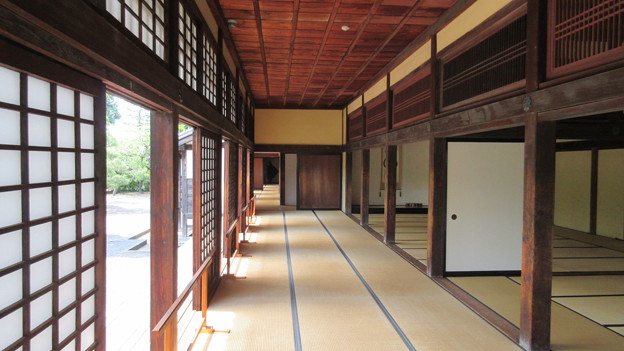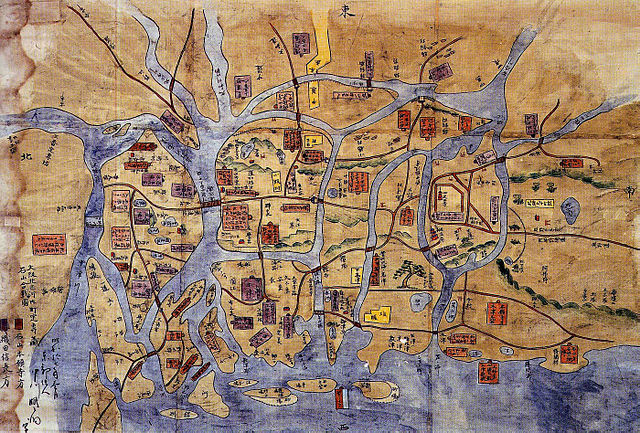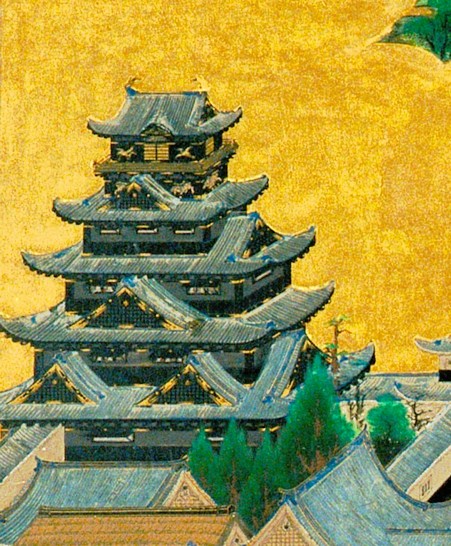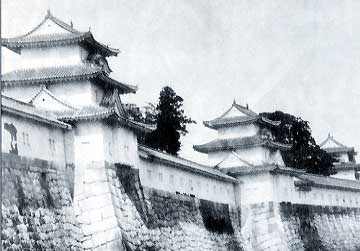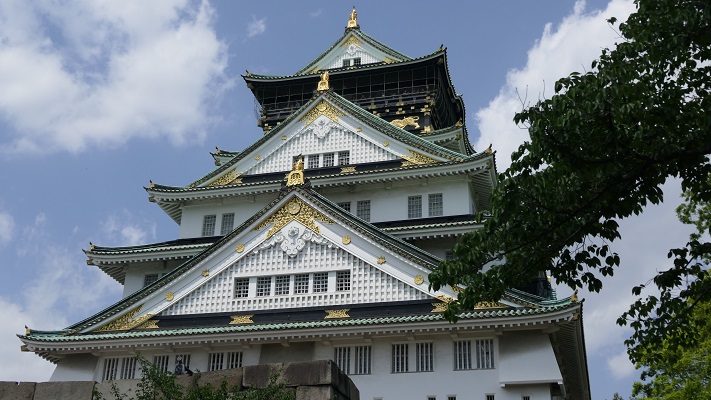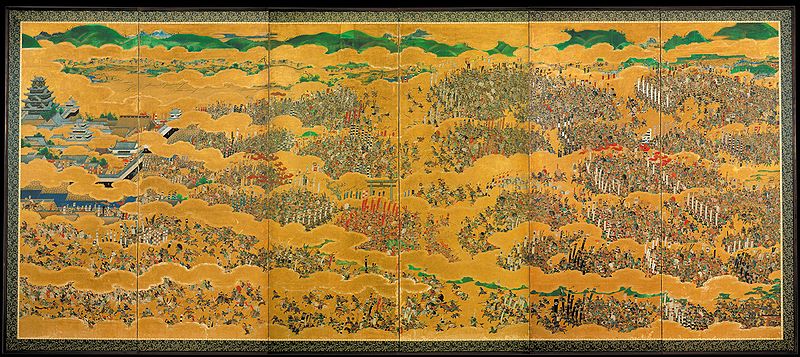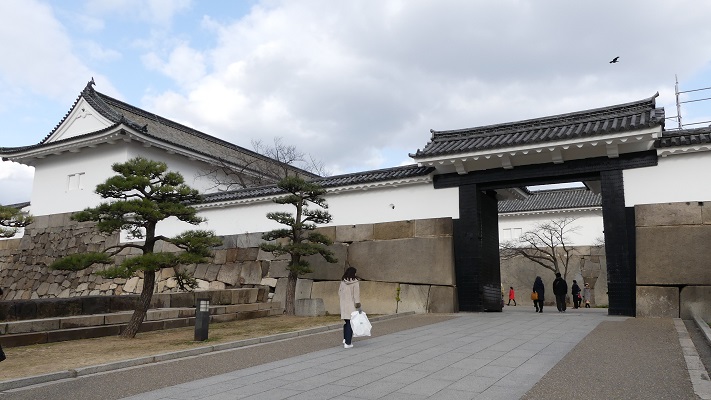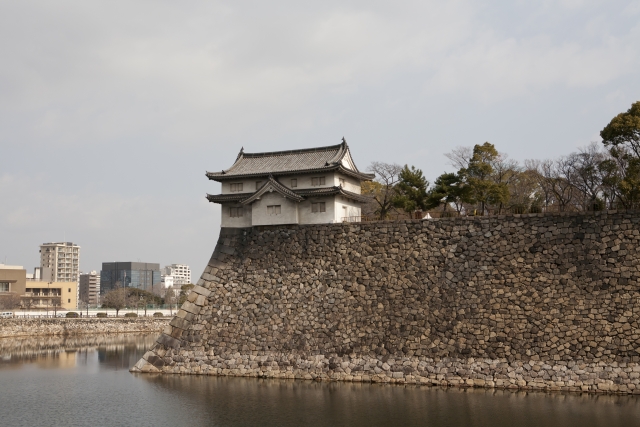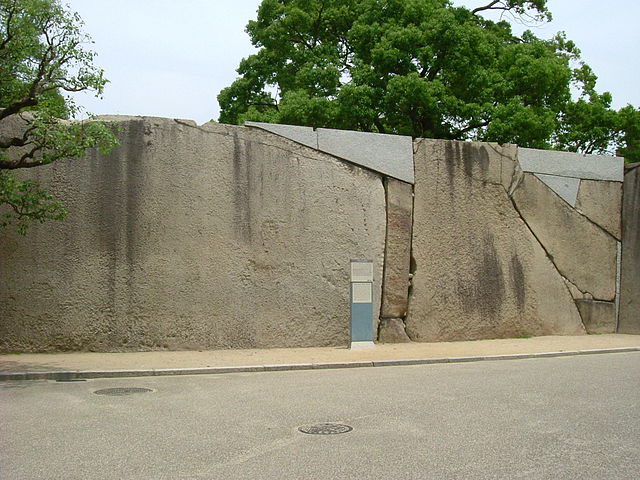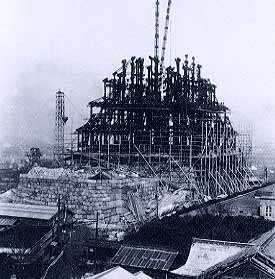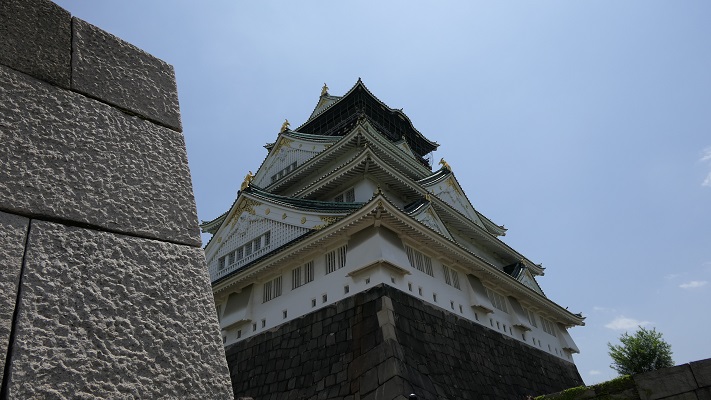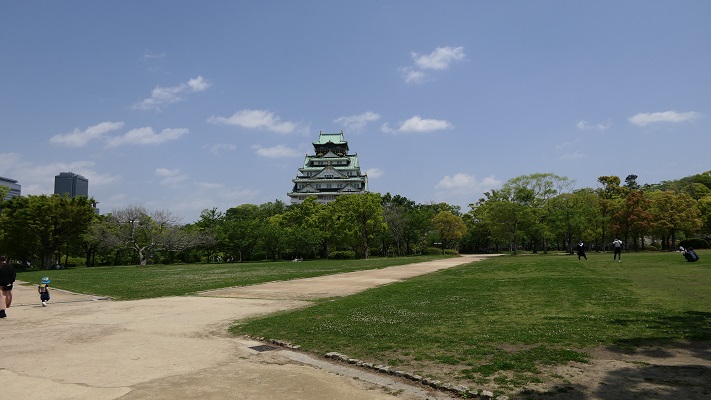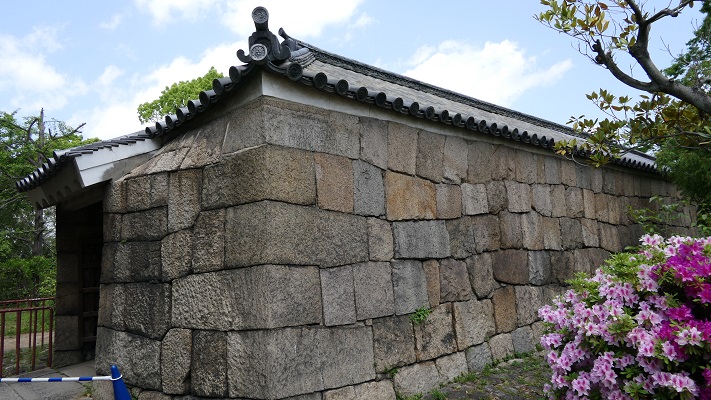
Location and History
掛川市は静岡県の中央に位置しています。日本の主要街道である東海道が古代よりこの地を通っています。掛川城は最初は戦国時代の初期に築かれ、すぐに戦国大名にとって重要な城となりました。それ以来、今川氏、武田氏、徳川氏といった戦国大名が、この城を手に入れ周りの地域を支配するために鎬を削りました。Kakegawa City is located in the middle of Shizuoka prefecture. Tokaido, one of the major routes in Japan passes through this city since the Ancient Ages. The Kakegawa Caste was first built in the Civil War Period, and quickly became an important site for warlords. Since then, warlords such as the Imagawa, Takeda, Tokugawa clans battled each other to get the castle and govern the area around it.
掛川城の位置(The location of Kakegawa Castle)
戦国時代末期になって、天下人の豊臣秀吉によって、山内一豊がこの城に移されてきました。一豊は、城の大改修を行い、天守を建築し、合わせて城下町も整備しました。最盛期には、この城は総延長で3450メートルもの水堀に囲まれていました。
At the end of the Civil War Period, Kazutoyo Yamanouchi was transferred to this castle by Hideyoshi Toyotomi, the ruler of the whole country. Yamanouchi renovated the castle including the build of the keep “Tenshu” and the castle town. At its highest point, the castle was surrounded by water moats of 3450m long in total.
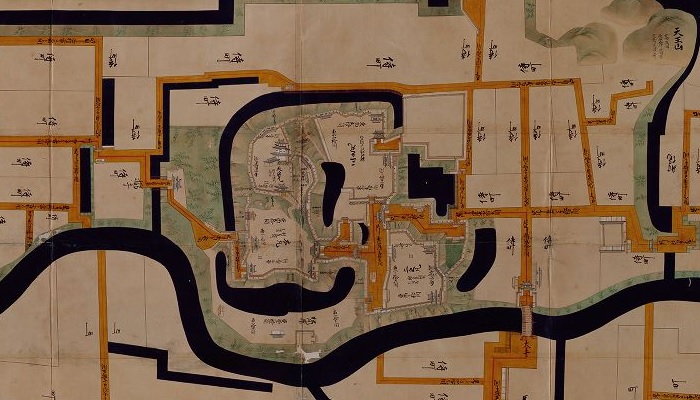
一豊はこの城に10年間居ましたが、今度は土佐国、今の高知県に移されました。彼は再び現在の高知市に高知城を築いたのですが、その天守は「御城築記」という古書によれば、掛川城に似せて作られたといいます。
He stayed at the castle for about 10 years, and was transferred again to Tosa Province, now Kochi prefecture. He also built Kochi castle in now Kochi City and its Tenshu was designed similar to Kakegawa’s design according to an old document called “Oshiro-Chikuki”.

その後、掛川城の城主は何回も変わったのですが、城主たちは江戸時代を通じて城を維持してきました。ところが、1854年に安政地震が発生し、天守を含む城のほとんどの建物が崩壊しました。掛川藩の藩士たちは、天守を再建せず、その代わりに藩庁として二の丸御殿を造営しました。
After that, though the lords of Kakegawa castle ware changed many times, they all kept the castle through the Edo Period. However, the Ansei Great Earthquakes happened in 1854, and most of the castle’s buildings collapsed including Tenshu. Warriors of the Kakegawa domain didn’t rebuilt Tenshu instead of building the Ninomaru main hall for their government office.

Features
現在では、二の丸御殿と天守の両方を見ることができます。二の丸御殿は、日本でわずか4つしか残っていない大名御殿の一つとなります(他には二条、高知、川越)。この御殿が完成した直後に明治維新を迎えてしまい、武士による統治の時代が終わってしまいました。そして御殿は、学校、役場、農協、更には消防署にまで転用されてきました。御殿が史跡として認知されたのは比較的最近で、1980年に重要文化財に指定されました。
Now we can see both of the Ninomaru main hall and the Tenshu. Ninomaru main hall is one of the only four remaining lords’ main halls in Japan. (The others are Nijo, Kochi and Kawagoe.) Immediately after the completion of the hall, the Meiji Restoration had come and the governance of warriors ended then. The hall was turned into a school, a city hall, an agricultural cooperative, and even a fire station. It is relatively recent that the hall was regarded as a historical site, and designated as an important cultural property in 1980.

Later Life
一方でこの城は安政地震以来、天守のない状態が長く続きました。その代わりに1907年に日露戦争の戦死者を弔うために、天守台に観音菩薩像が設置されました。掛川市の行政と市民たちは、天守の再建を熱望してきましたが、予算不足のために実現できませんでした。しかし突然状況が変わりました。約30年前にある婦人がこの市に移住してきたのですが、市の方針である「生涯学習都市」に共感し、多額の寄付を申し出ました。これをきっかけに市は、天守をただ再建するだけではなく、それを伝統的な木造建築で復元することを決断しました。
On the other hand, the castle had no Tenshu for a long time since the Ansei Earthquakes. Instead the statue of Kannon Bodhisattva was placed on the ruin of Tenshu base in 1907 to pray for fallen soldiers of the Russo-Japanese War. The city officials and citizens longed to rebuild the Tenshu, but they couldn’t because of a lack of funds. The situation suddenly changed when a woman moved to the city about 30 years ago. She agreed with the city’s policy of “Lifelong Learning City”, and donated a large sum of money. This made the city officials decide to not only rebuild Tenshu but also restore it in traditional wooden style.
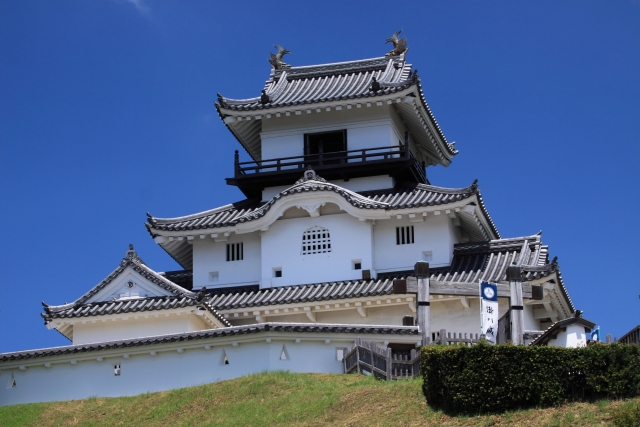
その復元にはいくつか問題がありました。一つには、天守を描いた絵図はいくつかあったのですが、詳細は不明だったことです。この問題を解決するために、設計者は掛川城と似ているであろう現存している高知城の設計を参考にしました。また、好条件だったのは、天守周辺の地区は史跡に指定されていなかったため、新しい天守を比較的に自由に設計することができました。建築基準に適合するため、石垣を作り直し、基礎構造の強化を行いました。反面、残っていた元の石垣は撤去されてしまいました。
There were some problems about it. One of them was that several drawing pictures of the Tenshu remain, but details are unclear. To solve the problem, the designers use the plan of the remaining Kochi castle Tenshu that should be similar to Kakegawa. In addition, the good news were that they were able to design the new Tenshu comparatively freely, because the area around Tenshu was not designated as a historical site. They were able to both build it to code and remake the stone walls to strengthen the general structure. Whereas, the ruin of original stone wall were removed unfortunately.

これは明治時代以来、最初の木造による天守復元の事例で、1994年に完成しました。この復元により、掛川市にすばらしいシンボルがもたらされ、毎年約10万人の観光客を呼び込んでいます。
This was the first case of the restoration for wooden Tenshu since the Meiji Era with the completion in 1994. The campaign was successful to have the great symbol of the city, and attract around 100,000 tourists into the city every year.
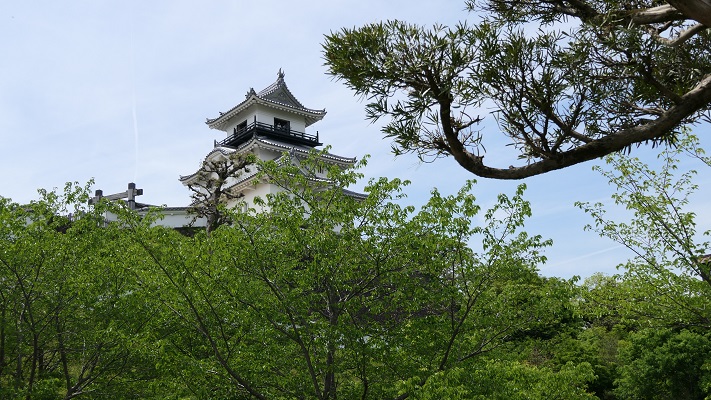
My Impression
1つの場所で天守と大名御殿の両方を見ることができるのは珍しく、その場所は掛川城と高知城のみです。掛川城の天守と二の丸御殿は1枚チケットを買えば両方入れます。天守はまだ新しいですが、大型木造建築の優れた技巧を見ることができます。
It is very rare to see both of a Tenshu and a lord’s main hall at one site. Only Kakegawa and Kochi castles can offer them. You can enter both of Kakegawa Castle’s Tenshu and Ninomaru main hall for one ticket. The Tenshu is still new, but you will see the great technique of a large wooden building.
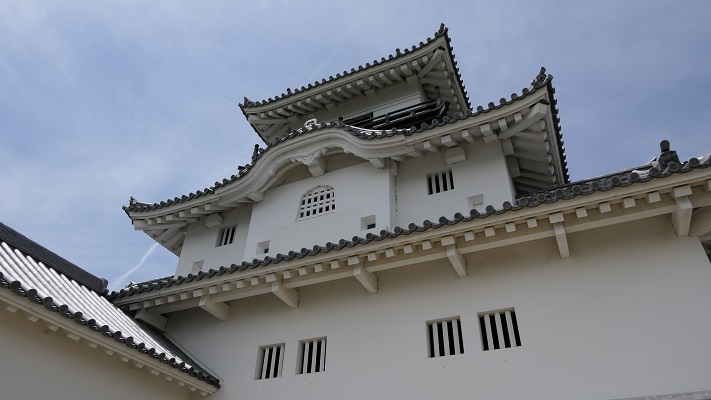

二の丸御殿は古くて重要な遺産なのですが、リラックスした雰囲気があります。庭園に面していくつか畳の間がありますが、座れる所があります。多くの伝統的な日本家屋がそうであるように、この御殿にもとても心地いい自然の風通しがあります。特に、夏の間はとても涼しく心地よく感じます。
The Ninomaru mail hall is old and an important heritage, but it has a relaxed atmosphere. There are several tatami rooms facing its garden where you may partly be seated. The hall has a good natural ventilation like many other traditional Japanese buildings. In particular, you can feel cool and comfortable during the summer.
二の丸御殿内部(The inside of Ninomaru Main Hall) posted by (C)晴耕雨読 @黄昏の番犬
How to get There
JR掛川駅から歩いて10分程です。
東京から掛川駅まで:東海道新幹線に乗れば、直接掛川駅に着きます。
It takes about 10 minutes on foot from the JR Kakegawa station.
From Tokyo to the station: Take the Tokaido Shinkansen super express direct to Kakegawa st.
Links and References
・掛川城(Official Site, Only Japanese?)
・埋木帖~城の復元と法令 ②掛川城天守(Only Japanese)
・掛川城物語、本田猪三郎著、静岡新聞社刊(Japanese book)

